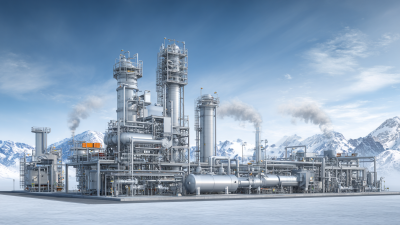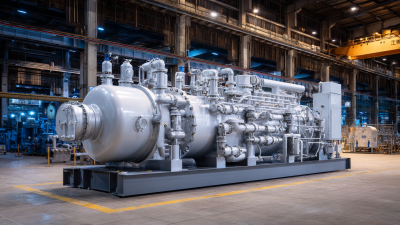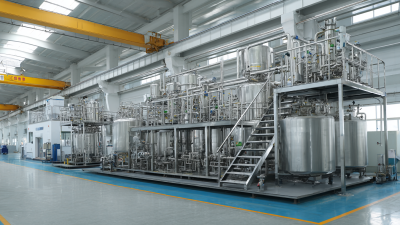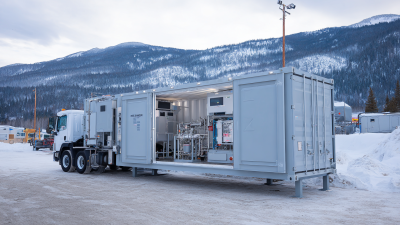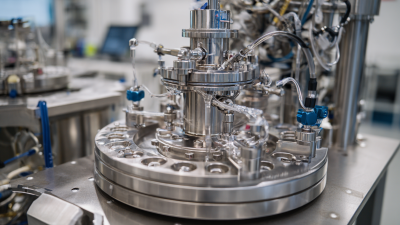
-
Home
-
About us
-
Products
-
Solutions
-
News
-
Blog
-
Contact us
Leave Your Message

As the global focus shifts towards sustainable energy solutions, the importance of innovative technologies like Cryogenic Hydrogen Solutions becomes increasingly evident. These solutions have emerged as a promising avenue for enhancing energy efficiency and reducing carbon emissions across various sectors. In recent years, advancements in cryogenic technology have made significant strides in the storage and transportation of hydrogen, positioning it as a vital player in the transition to clean energy systems.

In this article, we will explore essential tips for optimizing Cryogenic Hydrogen Solutions, highlighting their role in streamlining energy projects. By understanding the intricacies of handling cryogenic hydrogen—from production to storage and utilization—energy professionals can better integrate these solutions into their projects, maximizing both performance and sustainability. With this guide, we aim to equip stakeholders with the knowledge and strategies necessary to harness the full potential of cryogenic hydrogen, paving the way for a more efficient and environmentally friendly energy landscape.
Optimizing cryogenic hydrogen storage and distribution involves identifying the optimal conditions that enhance efficiency. According to a report by the International Energy Agency (IEA), the successful implementation of cryogenic hydrogen solutions can improve energy density significantly, with hydrogen stored at cryogenic temperatures reaching up to 70% more volume efficiency compared to gaseous hydrogen at 700 bar. This increased efficiency is pivotal, especially as the hydrogen economy evolves and demand surges.
To achieve these optimal conditions, temperature management plays a vital role. Research indicates that maintaining hydrogen at approximately -253 degrees Celsius is essential to minimize vaporization losses and ensure maximum density. Additionally, insulation techniques, such as vacuum jackets and advanced materials, can effectively reduce heat transfer, which is crucial for maintaining cryogenic temperatures during both storage and distribution phases. The Hydrogen and Fuel Cell Technical Advisory Committee has emphasized that tailored storage solutions can facilitate improved transfer rates and reduce boil-off rates, ultimately contributing to a more efficient hydrogen supply chain. Effective implementation of these strategies positions projects to harness the full potential of cryogenic hydrogen technologies.
When assessing the cost-effectiveness of cryogenic hydrogen systems versus traditional hydrogen solutions, several factors come into play that can significantly impact energy project budgets. According to a recent report by the U.S. Department of Energy, cryogenic systems can reduce storage costs by up to 25% due to the high density of liquid hydrogen, resulting in lower transportation expenses. Traditional gaseous hydrogen storage often requires larger tanks and more complex infrastructure, which can escalate costs quickly.
To optimize the implementation of cryogenic hydrogen solutions, one key tip is to conduct a thorough analysis of your specific project needs. Evaluating the scale and intended use of the hydrogen can help determine the most efficient system. Additionally, integrating advanced insulation materials can enhance the efficiency of cryogenic storage, minimizing boil-off losses and ensuring more sustainable energy output.
Furthermore, investing in automated monitoring systems is essential for maximizing operational efficiency. These systems provide real-time data on temperature and pressure, facilitating proactive maintenance and reducing downtime. By focusing on these strategic elements, energy projects can leverage the advantages of cryogenic solutions effectively while outperforming traditional methods in terms of cost and efficiency.
In the realm of cryogenic hydrogen solutions, the integration of advanced insulation materials plays a crucial role in enhancing thermal management for energy projects. Effective thermal insulation is essential for minimizing heat transfer, which can lead to hydrogen boil-off and efficiency losses. To address these challenges, materials such as aerogels, vacuum insulation panels, and multilayer insulation systems are being increasingly utilized. These advanced materials offer superior thermal resistance, ensuring that cryogenic temperatures are maintained during storage and transportation.

Moreover, selecting the right insulation materials is not only about performance but also cost-effectiveness and environmental sustainability. Innovative insulation technologies are being developed to reduce weight and improve energy efficiency, which is vital for large-scale energy applications. By optimizing the insulation design—considering factors like airflow and condensation prevention—project developers can significantly enhance the overall performance of cryogenic hydrogen systems. As the demand for clean and sustainable energy continues to grow, prioritizing advanced insulation techniques will be imperative for the successful implementation of cryogenic hydrogen solutions.
Implementing scalable hydrogen production techniques is crucial for enhancing the viability of energy projects focused on cryogenic hydrogen solutions. Recent advances in hybrid wind-solar systems demonstrate a significant potential for optimizing renewable hydrogen infrastructure. For example, studies across several Australian cities have shown how AI-based dynamic pricing can enhance the economic efficiency of hydrogen production, making it more accessible and commercially viable. By integrating renewable energy sources, project developers can lower operational costs and improve overall sustainability.
Moreover, advancements in electrolysis technology represent a promising breakthrough for scaling green hydrogen production. As water electrolysis gains traction, it allows for the conversion of renewable electricity into hydrogen fuel, which is essential for meeting increasing energy demands. Innovative projects, such as pilot programs for solar-to-hydrogen production, are paving the way for more efficient methods that can further decrease production costs. Furthermore, the exploration of biomass and other sustainable feedstocks into low-carbon hydrogen solutions offers flexible alternatives that can complement existing technologies, ensuring a diverse and robust energy portfolio for the future.
In the evolving landscape of cryogenic hydrogen applications, evaluating safety protocols and risk mitigation strategies is paramount. Recent evaluations of the hydrogen risk management policy in South Korea revealed that while responsiveness was well-received, there were significant concerns regarding the openness and clarity of existing guidelines. This indicates a critical need for robust protocols that not only ensure safety but also foster transparency in the industry. A qualitative risk analysis of overhead hydrogen piping has highlighted the importance of identifying potential vulnerabilities early in the design phase, thus reinforcing the role of rigorous assessments in preventing accidents.
To optimize cryogenic hydrogen solutions, consider the following essential tips: First, implement comprehensive life cycle assessments (LCA) to understand the environmental impact of hydrogen production, storage, and utilization. Reports suggest that effective LCA can position hydrogen as a cornerstone of a low-carbon energy future. Second, adopt innovative technologies that improve safety measures for hydrogen transportation and storage. Recent studies have pointed to significant advances in leakage detection technology, which can mitigate risks associated with liquid hydrogen systems, particularly at refueling stations. By integrating these strategies into your projects, you can enhance safety and support the broader transition to a sustainable hydrogen economy.

